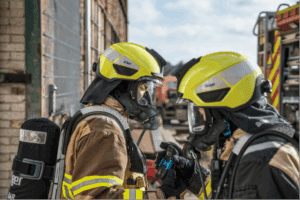For end users attempting to determine the future availability of HFCs in fire suppression‚ the mixed messages to the market can be both confusing and frustrating. The near future (2012-13) will more clearly reveal the unsustainable path for HFCs in all sectors‚ including those sold into fire suppression.
In July‚ 2012‚ for instance‚ Australia began driving down use of HFCs by implementing a carbon price (tax) that will dramatically impact the future of HFCs sold into fire suppression. Carbon is initially priced at $23 AUD per ton and will gradually increase until 2015‚ at which time the price will be determined by the market. HFCs‚ including those sold into fire suppression‚ will face an equivalent carbon price magnified by their global warming potential. The result is an unsustainable addition to HFC agent costs by more than $30/lb. The good news for the Australian fire suppression market is that substitutes‚ including Novec 1230 fluid‚ are readily and commercially available to replace HFC-based systems virtually wherever they may presently be used.
This fall‚ the European Union will reveal the policy direction for the next revision of the F-gas regulation and that policy will solidify in 2013. Two prominent options include implementing marketing restrictions on HFCs in select sectors‚ and a phase-down in production or import of HFCs. These and other regional initiatives are unfolding under the backdrop of the United Nations continuing to find common ground for implementation of a global phase-down in production of HFCs. Again‚ the EU Commission has recognized that these policies are possible in sectors such as fire suppression where alternatives are readily available.
The bottom line is that HFCs sold into fire suppression fall squarely in the middle of the crosshairs on HFCs‚ because no other sector as clean agent fire protection is as well-prepared to move to the next generation of sustainable alternatives.




































